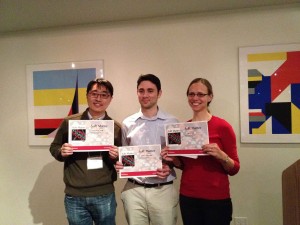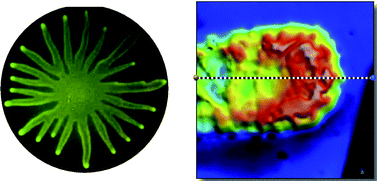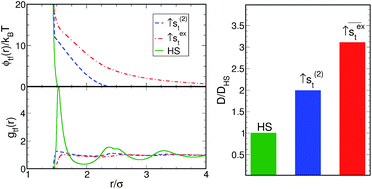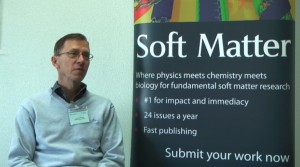Read the most popular Review Articles of 2011 for free today
Self-assembly of amphiphilic peptides
I. W. Hamley
Soft Matter, 2011, 7, 4122-4138
DOI: 10.1039/C0SM01218A
Stimulus responsive core-shell nanoparticles: synthesis and applications of polymer based aqueous systems
Olivier J. Cayre , Nelly Chagneux and Simon Biggs
Soft Matter, 2011, 7, 2211-2234
DOI: 10.1039/C0SM01072C
Cellulose nanowhiskers: promising materials for advanced applications
Stephen J. Eichhorn
Soft Matter, 2011, 7, 303-315
DOI: 10.1039/C0SM00142B
Polylactide (PLA)-based amphiphilic block copolymers: synthesis, self-assembly, and biomedical applications
Jung Kwon Oh
Soft Matter, 2011, 7, 5096-5108
DOI: 10.1039/C0SM01539C
Morphology of polymer-based bulk heterojunction films for organic photovoltaics
Matthias A. Ruderer and Peter Müller-Buschbaum
Soft Matter, 2011, 7, 5482-5493
DOI: 10.1039/C0SM01502D
Stimulus responsive nanogels for drug delivery
Liusheng Zha , Brittany Banik and Frank Alexis
Soft Matter, 2011, 7, 5908-5916
DOI: 10.1039/C0SM01307B
Covalently cross-linked amphiphilic block copolymer micelles
Cornelus F. van Nostrum
Soft Matter, 2011, 7, 3246-3259
DOI: 10.1039/C0SM00999G
PNIPAM microgels for biomedical applications: from dispersed particles to 3D assemblies
Ying Guan and Yongjun Zhang
Soft Matter, 2011, 7, 6375-6384
DOI: 10.1039/C0SM01541E
Nanoparticles with targeting, triggered release, and imaging functionality for cancer applications
Kristin Loomis , Kathleen McNeeley and Ravi V. Bellamkonda
Soft Matter, 2011, 7, 839-856
DOI: 10.1039/C0SM00534G
Hydrophilic and superhydrophilic surfaces and materials
Jaroslaw Drelich , Emil Chibowski , Dennis Desheng Meng and Konrad Terpilowski
Soft Matter, 2011, 7, 9804-9828
DOI: 10.1039/C1SM05849E
To keep up-to-date with all the latest research, sign up for the Soft Matter e-Alert or RSS feeds or follow Soft Matter on Twitter or Facebook.
Comments Off on Most read Soft Matter Reviews in 2011
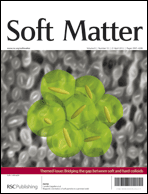 The Soft Matter themed issue on ‘Bridging the Gap between Hard and Soft Colloids’ has been published. Read the Editorial by Guest Editors Dimitris Vlassopoulos and Michel Cloitre, and the rest of the full issue today.
The Soft Matter themed issue on ‘Bridging the Gap between Hard and Soft Colloids’ has been published. Read the Editorial by Guest Editors Dimitris Vlassopoulos and Michel Cloitre, and the rest of the full issue today.











